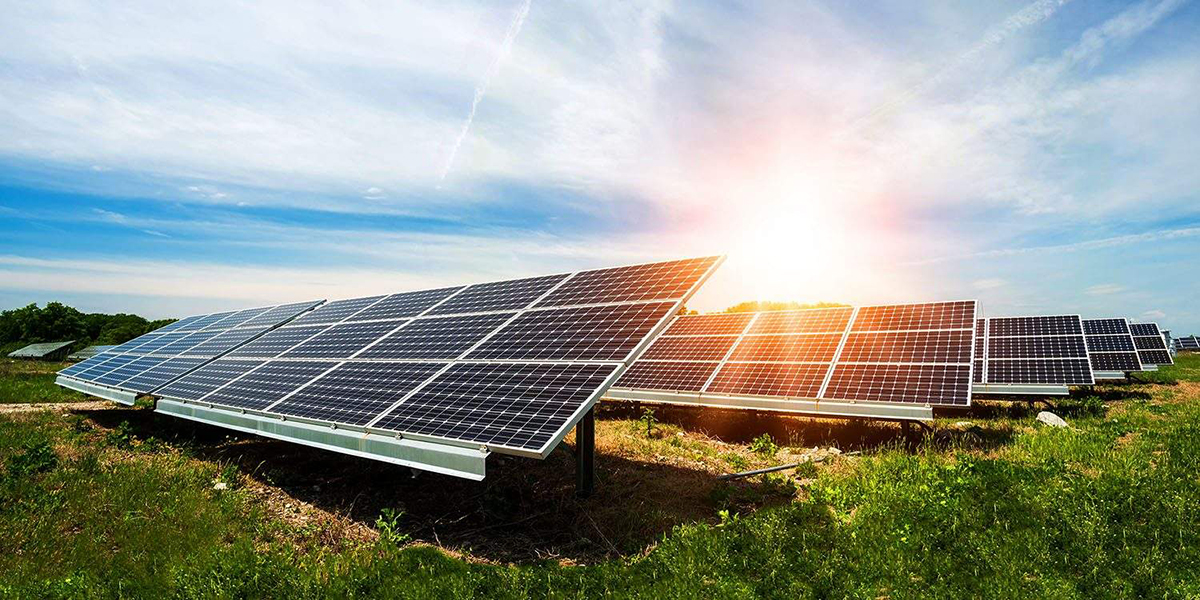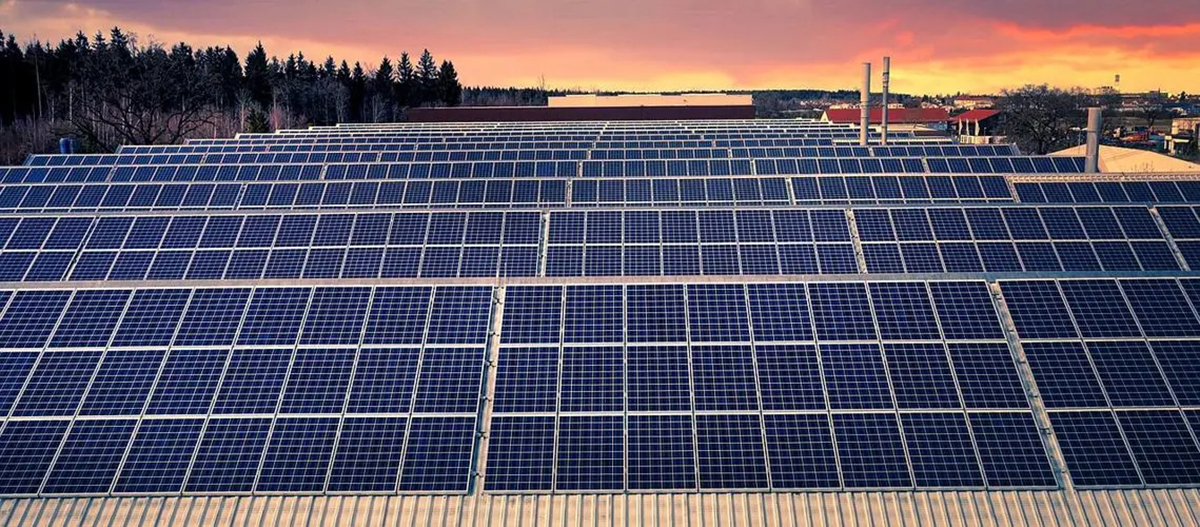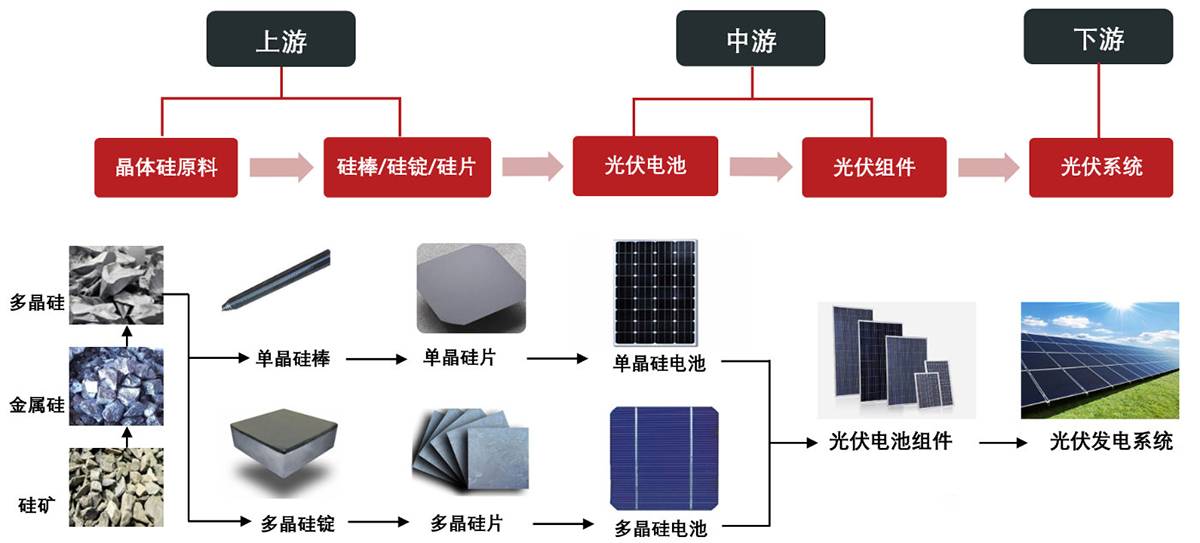
Solar energy is an inexhaustible, clean, renewable energy source. Using solar energy to generate electricity is the most popular energy research topic in contemporary times.
Organic silicon materials with excellent process performance and usability have entered the field of solar power generation. With the development of the solar industry, solar power generation technology continues to advance, and new requirements are constantly put forward for supporting materials. Organic silicon materials will play an even more important role. role, which also brings new development opportunities to the silicone industry.The working principle, system composition and operation mode of solar power generation. Currently, the more mature solar power generation technologies mainly include solar photovoltaic power generation technology and solar thermal power generation technology. The main advantage of the photovoltaic power generation system is that it can be constructed in a flexible scale and can effectively utilize the roofs and curtain walls of buildings without the need for Occupying land resources, it can generate electricity locally and apply it locally, reducing power transmission losses. Photovoltaic power generation devices basically do not use operating mechanical equipment, and are reliable, stable, long-lasting, and easy to install and maintain. The scale effect of solar thermal power generation is obvious. Solar thermal power generation is only suitable for large-scale power stations, which requires higher land area and capital scale. The larger the scale of the power station, the lower the cost of unit electricity.

Solar photovoltaic power generation technology Photovoltaic power generation principle: According to the photovoltaic effect, under sunlight, the photoelectric conversion chip of the solar cell absorbs light energy and generates photoelectron-hole pairs. Under the action of the built-in electric field of the battery chip, the photogenerated electrons and holes The holes are separated, resulting in the accumulation of opposite charges at both ends of the battery, that is, the generation of "photovoltaic electromotive force". This phenomenon of voltage generated by light is the "photovoltaic effect". When the leads and the load are connected to both ends of the built-in electric field of the photovoltaic cell, current will flow through the load, thereby achieving photovoltaic power generation and work. Solar photovoltaic power generation technology Photovoltaic power generation system mainly consists of three parts: solar panels (components), controllers and inverters, which are mainly composed of electronic components.

Currently, there are three types of widely used solar cells: monocrystalline silicon, polycrystalline silicon and amorphous silicon. In recent years, compound materials other than silicon such as indium phosphide, gallium arsenide, and indium selenium copper have also appeared. Solar photovoltaic power station, solar lamp, household solar photovoltaic power generation system, solar thermal power generation technology, solar thermal power generation principle: use optical system to gather solar radiation energy, use it to heat the working medium to generate steam, and drive the turbine generator to generate electricity. Solar thermal power generation test device Solar thermal power generation device Solar thermal power station Solar thermal power generation technology Solar thermal power generation technology uses optical systems to gather solar radiation energy, heat the working fluid to generate steam, and drive the turbine generator to generate electricity. According to different light concentration methods, solar thermal power generation is divided into four photothermal power generation methods: tower type, trough type, dish type (disk type) and Fresnel focusing. Solar thermal power generation technology The trough solar thermal power generation system adopts the "line focusing" principle, which focuses and reflects sunlight onto a collector tube through a large-area trough-type parabolic reflector, heating the heat carrier in the tube, and then through the heat The conversion equipment generates high-pressure steam, which is fed into a conventional steam turbine to generate electricity. The system generally consists of a concentrating heat collection device, a heat storage device, a heat engine power generation device or/and an auxiliary energy device (such as a boiler). The concentrating heat collecting system is the core of this system and consists of a condenser, a receiver and a tracking device. The basic form of a tower photothermal power generation system is to use a group of heliostats that independently track the sun to focus sunlight on a receiver fixed on the top of the tower. The high-temperature heat transfer medium generated heats the heat transfer medium, and the high-temperature heat transfer medium heats steam. Drive conventional turbine generator sets to generate electricity. This method of power generation does not require conventional energy, and the power supply comes entirely from the high-temperature heat transfer medium generated by solar radiation in the heat collection system. This kind of photothermal power generation system mainly consists of heliostat array, tower, heat receiver, heat transfer fluid, heat exchange components, heat storage system, control system, steam turbine and power generation system. Solar photothermal power generation technology, the dish photothermal system relies on dual-axis tracking and uses rotating parabolic reflectors to focus the incident solar radiation. The heat absorber absorbs this part of the radiant energy and converts it into heat energy, heating the working fluid to Drive a heat engine (such as a gas turbine, Stirling engine, or other type of turbine) to convert thermal energy into electrical energy. The dish photothermal power generation system mainly consists of a solar concave focusing mirror, a receiver and a generator. Solar Stirling technology puts the Stirling generator directly at the focal point. The Fresnel system is a simplified trough system. The Fresnel system actually uses a set of flat mirrors to replace the parabolic curved mirror focusing in the trough system. By adjusting and controlling the tilt angle of the plane mirror, sunlight is reflected into the collector tube to achieve focused heating. In order to simplify the system, water, oil or molten salt is generally used as the heat-absorbing medium. Compared with parabolic curved mirrors, flat reflectors are less difficult to manufacture, thus greatly reducing the initial investment cost.

The operating mode of Fresnel lens solar power generation is that the power generation device that converts the sun's radiant energy into electrical energy is called a solar power generation system. The electric energy generated by solar energy is transported to the user through the operating system to perform work. The operation methods of ground-based civil solar power generation systems are mainly divided into two categories: off-grid operation and online operation. Application of organic silicon materials in the field of solar power generation Characteristics and functions of organic silicon materials Diverse forms of organic silicon polymers Most of the organic silicon polymers have semi-inorganic and semi-organic special polymer structures Organic silicon materials are resistant to high and low temperatures, weather aging resistance, and hydrophobic It has a series of excellent properties such as moisture-proof, high insulation strength and low dielectric loss, optical transparency, safety and non-toxicity. Silicone materials are not only suitable for applications in a variety of situations, but can also be used in harsh environments that general-purpose synthetic materials cannot withstand. Used as supporting materials for solar power generation devices that work under outdoor conditions for a long time, silicone products show unparalleled superior performance. Application of organic silicone materials in the field of solar power generation Organic silicone materials used in supporting solar cell systems Solar cell bonding and sealing Single-component room temperature vulcanized silicone rubber Solar cell chip surface anti-reflective film material Protective film on the transparent surface of solar cell modules Solar energy Filled adhesive materials for battery module assembly Silicone materials used in solar photothermal power generation systems High-temperature heat transfer media for solar photothermal power generation systems Silicone oil Heat-resistant and weather-resistant silicone coatings for solar photothermal power generation structures Solar photothermal power generation Fresnel lens molding Use organic silicon materials for solar power generation supporting applications. Research and development of organic silicon materials. Market demand survey and research to formulate correct technical routes and experimental solutions. Technical key synthesis research and simulation application tests. Comprehensive improvement and product finalization production. I wish you all to create brilliance in the field of solar power generation. Achievements!
Solar photovoltaic power station, solar thermal power station, solar thermal power generation technology, trough solar thermal power generation system adopts the "line focusing" principle, which focuses and reflects the sunlight onto a collector tube through a large area of trough parabolic reflector. The heat carrier in the heating tube then generates high-pressure steam through the heat conversion equipment and sends it to a conventional steam turbine for power generation. The system generally consists of a concentrating heat collection device, a heat storage device, a heat engine power generation device or/and an auxiliary energy device (such as a boiler). The concentrating heat collecting system is the core of this system and consists of a condenser, a receiver and a tracking device. The basic form of the tower photothermal power generation system is to use a group of heliostats that independently track the sun to focus the sunlight on a receiver fixed on the top of the tower. The generated high temperature heats the heat transfer medium, and the high temperature heat transfer medium heats the steam. Drive conventional turbine generator sets to generate electricity. This method of power generation does not require conventional energy, and the power supply comes entirely from the high-temperature heat transfer medium generated by solar radiation in the heat collection system. This kind of photothermal power generation system mainly consists of heliostat array, tower, heat receiver, heat transfer fluid, heat exchange components, heat storage system, control system, steam turbine and power generation system. Application of organic silicone materials in the field of solar power generation Characteristics and functions of organic silicone materials There are many forms of organic silicone polymers.




